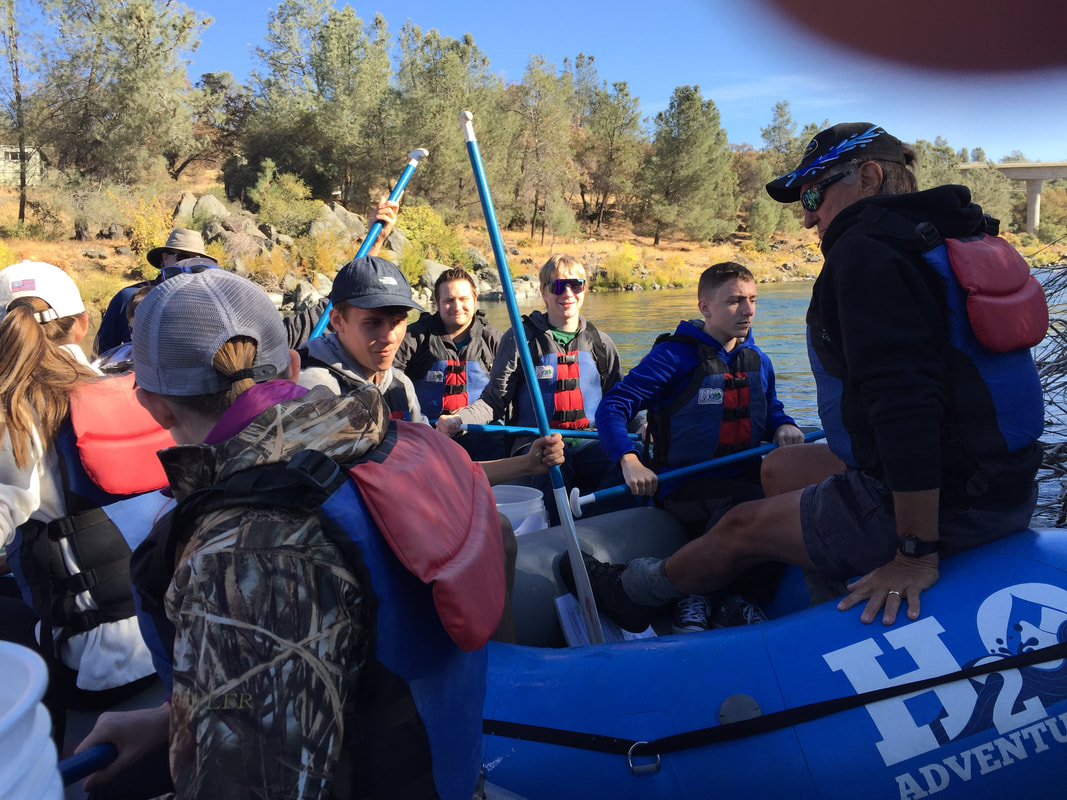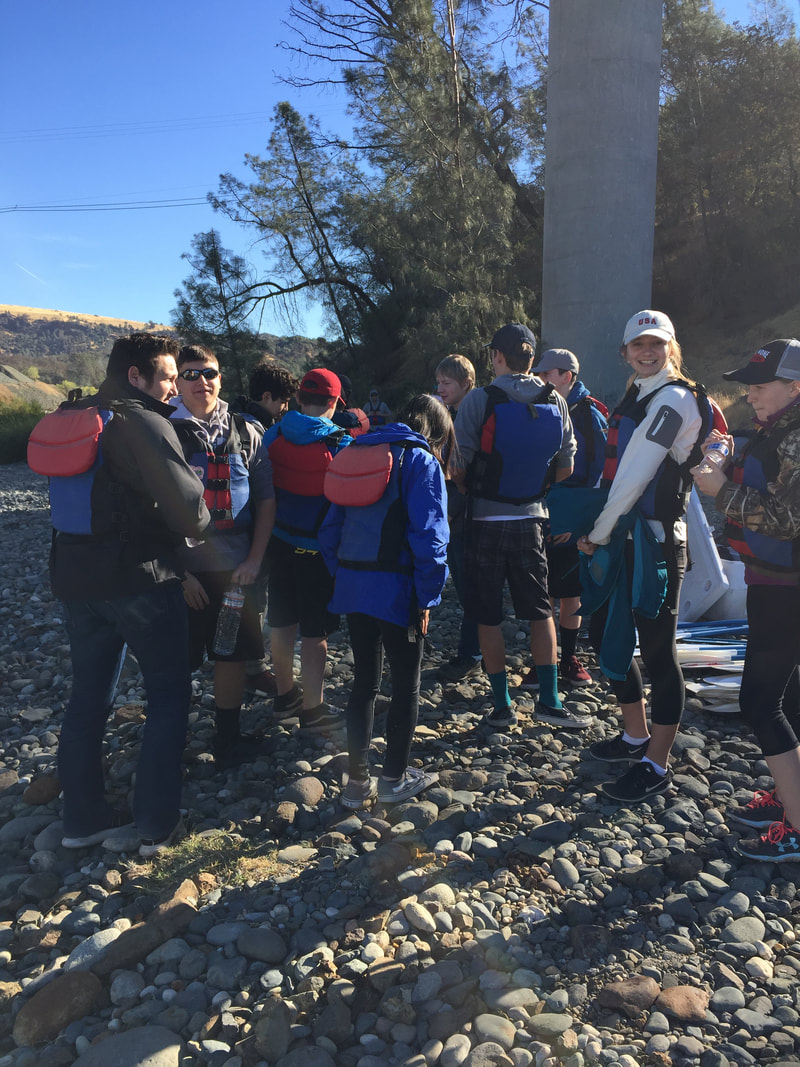
By Robert Baker, Aaron Foster, Austin Foster, Dylan Martinelli, Jacob Rust
On Tuesday, October 30th DHS students went to the South part of the Yuba River and saw the spawning of the Chinook during their life cycle.
They learned about how and where they laid eggs and how they finally complete their life cycle. The students had a swell time rowing in rafts going down the river and seeing everyday life of the salmon, trout and other animals in the area. On the rafting trip that day they saw a total of 8 salmon and redds.
During the trip down stream all of our groups had different guides who specialized in different careers, like biology and some of them had river rafting expertise, they were very well rounded with all subjects. While in our rafts going down slow streams they would tell us interesting facts about the wildlife, or where the salmon were in the water, they would also point out the redds which are white patches of rocks where the salmon would lay there eggs.
The life cycle of a salmon has five stages in their life. The students learned about all of them. The 5 stages are called the Egg stage, the Alevin stage, the Fry stage, the Parr stage, and finally the Adult stage. There were two types of salmon in the area where the students were. There were Chinook Salmon and Steelhead Salmon. The Chinook Salmon can reproduce once and the Steelhead Salmon three times.
The guides pulled over our river rafts, and had a talk with us about specimen. For example, stonefly, mayfly, and caddisfly. They showed the group that most of them are under rocks when the water is running fast. That provides bubbles which equals oxygen for them. They gave us five minutes to find as many flies as we could.
Before the end of the trip downstream, the guides pulled the groups onto land and the students a very wide view of the area and how far the river spans out and they explained how this should be kept clean and how their efforts to preserve this part of the river will help the surrounding environment.
Here some quotes of the trip from the students that went on the trip. Ezra Acuna said, “during the trip l learned how salmon lay their eggs and saw how the taggers record all the fishes.” “I came here a few years ago and this year was a lot more fun.” Another quote from Ms Bolle, “We had a great time and really enjoyed it and hope we can do it again.” A huge thank you to the Sierra Schools Foundation for funding this amazing trip, every student had a blast.
On Tuesday, October 30th DHS students went to the South part of the Yuba River and saw the spawning of the Chinook during their life cycle.
They learned about how and where they laid eggs and how they finally complete their life cycle. The students had a swell time rowing in rafts going down the river and seeing everyday life of the salmon, trout and other animals in the area. On the rafting trip that day they saw a total of 8 salmon and redds.
During the trip down stream all of our groups had different guides who specialized in different careers, like biology and some of them had river rafting expertise, they were very well rounded with all subjects. While in our rafts going down slow streams they would tell us interesting facts about the wildlife, or where the salmon were in the water, they would also point out the redds which are white patches of rocks where the salmon would lay there eggs.
The life cycle of a salmon has five stages in their life. The students learned about all of them. The 5 stages are called the Egg stage, the Alevin stage, the Fry stage, the Parr stage, and finally the Adult stage. There were two types of salmon in the area where the students were. There were Chinook Salmon and Steelhead Salmon. The Chinook Salmon can reproduce once and the Steelhead Salmon three times.
The guides pulled over our river rafts, and had a talk with us about specimen. For example, stonefly, mayfly, and caddisfly. They showed the group that most of them are under rocks when the water is running fast. That provides bubbles which equals oxygen for them. They gave us five minutes to find as many flies as we could.
Before the end of the trip downstream, the guides pulled the groups onto land and the students a very wide view of the area and how far the river spans out and they explained how this should be kept clean and how their efforts to preserve this part of the river will help the surrounding environment.
Here some quotes of the trip from the students that went on the trip. Ezra Acuna said, “during the trip l learned how salmon lay their eggs and saw how the taggers record all the fishes.” “I came here a few years ago and this year was a lot more fun.” Another quote from Ms Bolle, “We had a great time and really enjoyed it and hope we can do it again.” A huge thank you to the Sierra Schools Foundation for funding this amazing trip, every student had a blast.



